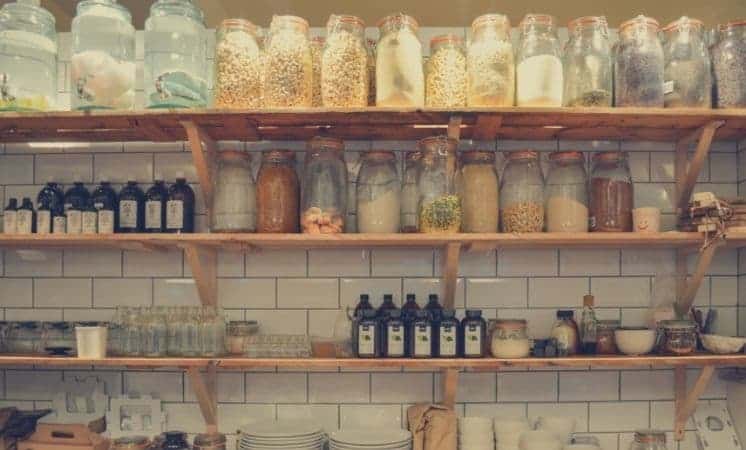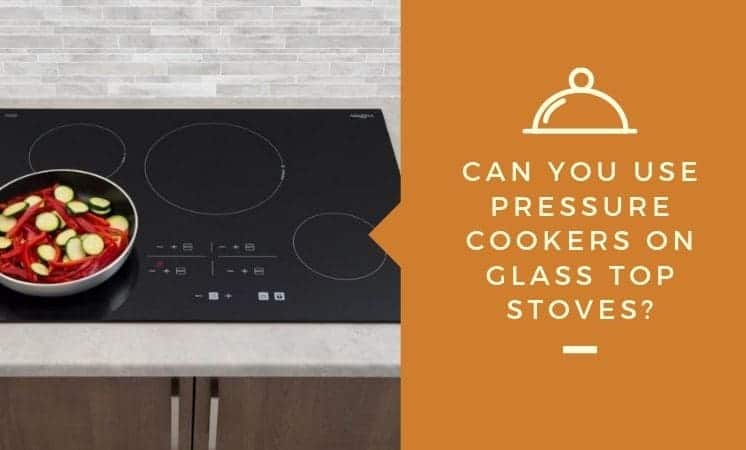In the last few decades, glass top stoves have become quite popular amongst individuals who are looking for an easier, more convenient, and modern looking kitchen. With no visible burner pans, better heating control, and quicker heat and cool-down times, there is no doubt that these impressive looking stoves bring quite a few advantages to the kitchen. But, can you use a pressure cooker on a glass top stove?
Imagine setting a huge stainless-steel pressure cooker on top of your glass stove and letting it reach 250 degrees Fahrenheit. If that doesn’t make you cringe, it should. After all, heavy pots and pans can prove quite dangerous on the slick glass not to mention the weight might crack the glass or at least that’s what most people think.
So, can you use pressure cookers on glass top stoves? Yes, you can but if you are going to, you will need to know how to use it properly, understand how your glass top stove works, and understand how much pressure and weight your stove can withstand.
How To Use Your Pressure Cooker on a Glass Stove Top?
- Make sure to do all of your pre-cooking ahead of time in a regular pot on your stove. This includes sautéing any vegetables you are using and browning up your meat ingredients.
- Once you are done pre-cooking, let the stove cool right down and clean it up if need be. Then place your stainless-steel pressure cooker onto your stovetop and fill in the amount of liquid you will need and place your food inside.
- Place your lid onto the pot and lock it. You may need the lid in a specific position for it to lock or you may need to manually lock it with a switch. Check your manual for clear instructions.
- Set the pressure release valve to close so that pressure can build. It will pop open and release pressure as needed.
- Turn up your heat to medium or high depending on how much pressure you need to cook your food. If you see steam coming out of the top vents on your pressure cooker, you are doing it right. Do not be alarmed if you see some condensation.
- When the pressure indicator pops up, reduce your heat. You will need to play around with the heat control on your glass top stove to find the right reduced setting. Keep in mind that glass top stoves reduce their heat quite quickly, so the reduction in heat from high/medium to low may be too much and you’ll need an in-between.
- Monitor your pressure cooker from here on out. If the pressure indicator drops, you do not have the heat high enough. If your pressure indicator is sputtering or whistling, the heat is too high.
- Choose to release the pressure through the recommended method based on your pressure cooker and the type of food you are cooking. The safest way is to let it naturally release over 15-20 minutes.
- Once the pressure indicator has dropped, you can open up the pot.
Keep in mind that during the pressure building stage, if you do not see any steam coming out of the valve or vents and your pressure indicator hasn’t moved within a five-minute period, check your lid.
To do this, remove the pot from the heat and open the lid away from you to reset it. Remember to never drag your pressure cooker across the cooktop.
How Much Weight Can a Glass Stove Top Take?
If you are planning on putting a lot of weight on your glass stove top, be wary as it can cause cracking and require you to replace the entire stovetop. With this said, you want to avoid storing heavy objects above your glass top stove, as they could crack it if they drop or fall onto its surface.
Beyond this, prolonged exposure to excess weight on your stovetop can weaken the glass and if you are unable to move the pot when it is full without dragging it across the surface of your stove, you are going to get scratches in the surface of the range.
Most ceramic-glass top stoves can withstand about forty-five to fifty pounds of weight. This is why you will see a lot of recommendations for the use of hot plates or propane burners for individuals who are planning on canning on their glass top stove. We will get into this in the section below.
Can You Pressure Can on a Glass Stove Top?

The short answer is no and here are the reasons why.
- Most canners have a concave bottom which can form a seal between the canner and the stovetop. When you try to remove the canner from the stove, it can shatter the stovetop if the seal is strong.
- A full can load is going to be incredibly heavy. Even if you have a canning pot that has a flat bottom, if the canner load is heavier than what your glass top stove can bear, you are going to end up with a broken range or a massively cracked stovetop.
- Glass top stoves will cycle the heat on and off, which means that you cannot hold a steady boil on them. If you cannot hold a steady boil in your canner, you cannot guarantee the safety and sterilization of your canned ingredients. Why? You will not have high enough levels of heat to penetrate the canning ingredients.
- Canners that are intended for burners tend to be too large in diameter for glass top stoves and will subsequently reflect heat back down onto the glass surface. This can fuse metal to the glass, it can burn the glass, crack it, and discolor it.
- Many glass top stoves have automatic cut-offs when the heat becomes too excessive. This will completely ruin your entire canning process. Under-processed food cannot be utilized.
Instead, choose to use an electric burner, an outdoor propane burner, a gas stove, or a standalone electric canner.
What Should You Not Use on a Glass Top Stove?
Cookware
- Avoid using pans and pots that do not have a flat bottom as the curved bottom allows for better heat transfer which can crack the glass top.
- Avoid using glass, cast iron, porcelain, enamel, glass, stoneware, and ceramic cookware as all of these can cause scratches on the glass surface. If you are choosing to use particularly high heat, cast iron will absorb it and transfer it back to the cooktop, causing cracking or may end up shutting the burner off completely. Cast iron is also known to have rough patches which can scratch your stovetop.
- Do not leave the bottoms of your cookware covered in debris. If not carefully cleaned off before use, it can melt into your glass stovetop and stain it.
- Do not slide your cookware across the stovetop. This can leave permanent marks on it, especially if you are using aluminum or copper.
- Avoid placing cookware utensils on the cooktop when cooking as these can burn or mark it.
- Do not place glass bakeware onto your glass stovetop after being taken out of the oven. The heat can be too much and cause the stovetop to crack.
Cleaning Methods
- Never use any cleaning products that have ammonia in them as it will leave streaks on the glass (use white vinegar instead). Avoid using any type of abrasive cleaners and tools on the stovetop as this can put microscopic scratches into the surface.
- Do not use scrubby sponges, steel wool, or any cleanser on the stove while it is hot.
- Do not lean into the stove when cleaning it. The extra pressure from you can cause it to crack.
Make sure that if you are cooking with sugary or starchy foods, do not let it spill over. If it spills over, it is highly recommended that you clean it up right away as cooked-on food on glass top stoves is a pain to remove.
You have to take a specially made scouring tool at a forty-five-degree angle to pull up the food after using white vinegar on it to loosen it up.

